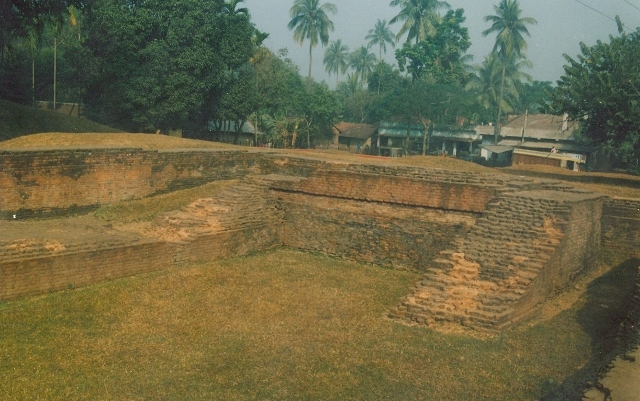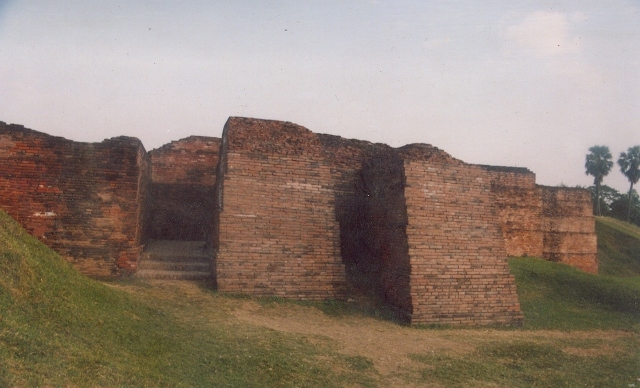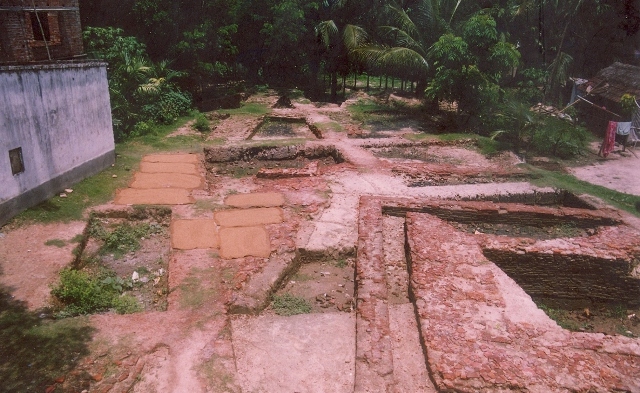Travel: A Date With Archaeology
Rangan Datta explores some of West Bengal’s lesser known historic places.
Do you want to spend next Sunday exploring the remains of an ancient temple built by the legendary mathematicians Khana and Mihir or the newly dug-out remains of a Buddhist Stupa, reportedly seen by the famous Chinese traveler Fa-Hien? Or the extensive citadelunearthed from an ancient mound, or the fort of the mythical king Chandraketu, buried under a mound for centuries? 
Names like Chandraketugarh, Dhosa and Tilpi and Ballal Dhipi may sound alien and far off but each of them is close enough to be explored in a single day. So, with winter fully set in, its best to pack your bags for a date with archaeology, which can also double up as a great picnic.
Chandraketugarh
According to archaeologists, Chandraketugarh was a prosperous urban settlement, which flourished between 4th century BC to 12th century AD, spanning six years starting from the pre-Mauryan to the Pala period.
The most remarkable finds of the region have been excavated from a mound, locally known as Khana Mihir’er Dhipi. Nothing much remains of the huge polygonal structure connected to the square vestibule. The roof has long collapsed and all that remains are the walls and a flight of stairs. The 4-feet thick walls are enough to explain the grandeur of the structure. Also, nothing much is known about the historical background of the structure, archaeologists believe it to be a temple dating back to the Pala period.
About a kilometer away from Khana Mihir lies the mound covering the fort of the mythical king Chandraketu. It is unfortunate that after the initial excavation in 1956-57 nothing much has been done here. The huge mound surrounded by rice fields, stands as a mute spectator covering up centuries of history.
Trip tips: Regular buses are available from Esplanade to Barachampa, via Barasat. (Time: 2 hours. Fare: Rs20). Khana Mihir’er Dhipi is located next to the bus-stand and Chandraketugarh is about a kilometre away. There are basic eateries in Barachampa. For more information: The Asutosh Museum in Calcutta University and the private collection of Dilip Maita at Berachampa.
Dhosa and Tilpi
Dhosa and Tilpi are the latest additions in the archaeological map of West Bengal. Excavation started in January 2006 and yielded treasures far beyond the expectations of archaeologists. 
The famous Chinese traveller Fa Hien reported a highly evolved Buddhist civilisation that flourished in Gangetic Bengal. The concentric square structure unearthed at Dhosa seemed to be the remains of a Buddhist Stupa, one of the 22 reported by Fa Hien. It probably belongs to the Gupta period, dating back to the 2nd and 1st century BC. The findings at Dhosa are probably the first concrete evidence of the popularity of Buddhism in Bengal.
On the other hand, Tilpi, the twin site of Dhosa, has yielded almost no archaeological structures but the entire region is strewn with copper ore, iron slag, punched-marked and cast copper coins, fragments of pottery (including glazed pottery). Historians are of the opinion that the findings at Tipli are the remains of an ancient furnace, where smiths smelted metals like silver and iron along with alloys like bronze and cast them into coins. Archaeological evidence indicates that both smelting and casting were carried out at Tilpi simultaneously, probably the only place in Gangetic Bengal to do so. Trip tips: Sealdah (South) – Take the Namkhana Local and get down at Gocharan (Time: 1hour, fare: Rs9). Gocharan - Dhosa auto (Time: 45 minutes, fare Rs7). Dhosa - Tilpi - Dhosa motor van (Time 15 minutes, fare Rs 50) For more Information: The State Archaeological Museum, Behala.
 Ballal Dhipi Ballal Dhipi
For centuries a huge mound covering an area of 1300sq ft and 30ft tall existed in Bamunpukur, a village very close to Mayapur. The locals call it Ballal Dhipi, named after Ballal Sen of the Sen dynasty, who ruled Bengal in 12th century AD. It was only in the late 1970s when it attracted the attention of the Archaeological Survey of India (ASI) and digging began in the early 1980s and was carried out in two phases. The first phase was carried out in 1982-83 and was followed by the second and final phase in 1988-89, revealing a stupendous brick structure in an extensive yard, covered on all sides by an enclosure wall.
Stucco heads, terracotta human and animal figurines, copper utensils and other objects have also been found from the site.
From the structure it is evident that the upper part was built over an earlier existing structure. Historians also agree to this and according to them, the upper remains dating back to the 12th century AD was built over another structure that dates back to the 8th and 9th century AD. Archaeologists have found traces of renovation and superimposition of structures revealing the remains of a temple complex dating back to 12th century AD.
Trip tips: Sealdah - Krishnanagar Local (time: 2hours, 15mins, fare Rs19). Krishnanagar - Bamunpukur bus (time: 45 minutes, fare Rs9). Simple eateries are available at Krishnanagar.
For more information: Ashutosh Museum, Calcutta University
|

